Monitoring Mental Fatigue and Cognitive Load
Cognitive training involves more than just designing training programs and progressively increasing their intensity. It's essential to keep an eye on how the training affects the brain, ensuring it's neither too strenuous nor too easy.

Cognitive training involves more than just designing training programs and progressively increasing their intensity. It's essential to keep an eye on how the training affects the brain, ensuring it's neither too strenuous nor too easy.
The Psychomotor Vigilance Task (PVT) and its brief variant, PVT-Brief (PVT-B), are trusted tools in sports science. They gauge fatigue by assessing reaction time and counting lapses in attention.
The PVT is available in three versions: 3-minute, 5-minute, and 10-minute. It offers a straightforward method to obtain a quantifiable measure of fatigue. By administering the test before and after cognitive training, it's possible to gauge the mental toll of a training session. Fatigue is indicated by slower reaction times or an increase in lapses. Over time, this approach provides a clear picture of what is normal and what is not for each individual.
Details of the Psychomotor Vigilance Test (PVT):
- Duration: Choose from 5 or 10 minutes.
- Lapse Criteria: Any response slower than 500ms is considered a lapse in the PVT.
Details of the PVT-Brief (PVT-B):
- Duration: 3 minutes.
- Lapse Criteria: Any response slower than 355ms is flagged as a lapse in the PVT-B.
Number of Lapses during the Psychomotor Vigilance Task as an Objective Measure of Fatigue
Gauging Mental Fatigue Levels:
By performing the PVT or PVT-B test before and after training sessions, we can gain valuable information about an individual's mental fatigue. This immediate feedback helps adjust the intensity of cognitive training, ensuring that the participant is neither under-challenged nor overwhelmed.
In the PVT-B graph shown, the solid blue line represents the steady pre-training reaction time over a span of 10 days. This shows the athlete's mental readiness at the beginning of each session. The dotted red line, on the other hand, displays the post-training PVT-B reaction times, which can fluctuate based on the cognitive demands of each session.
The graph underscores the effectiveness of the PVT-B test. When conducted both before and after training, it provides a clear picture of an athlete's mental fatigue levels.
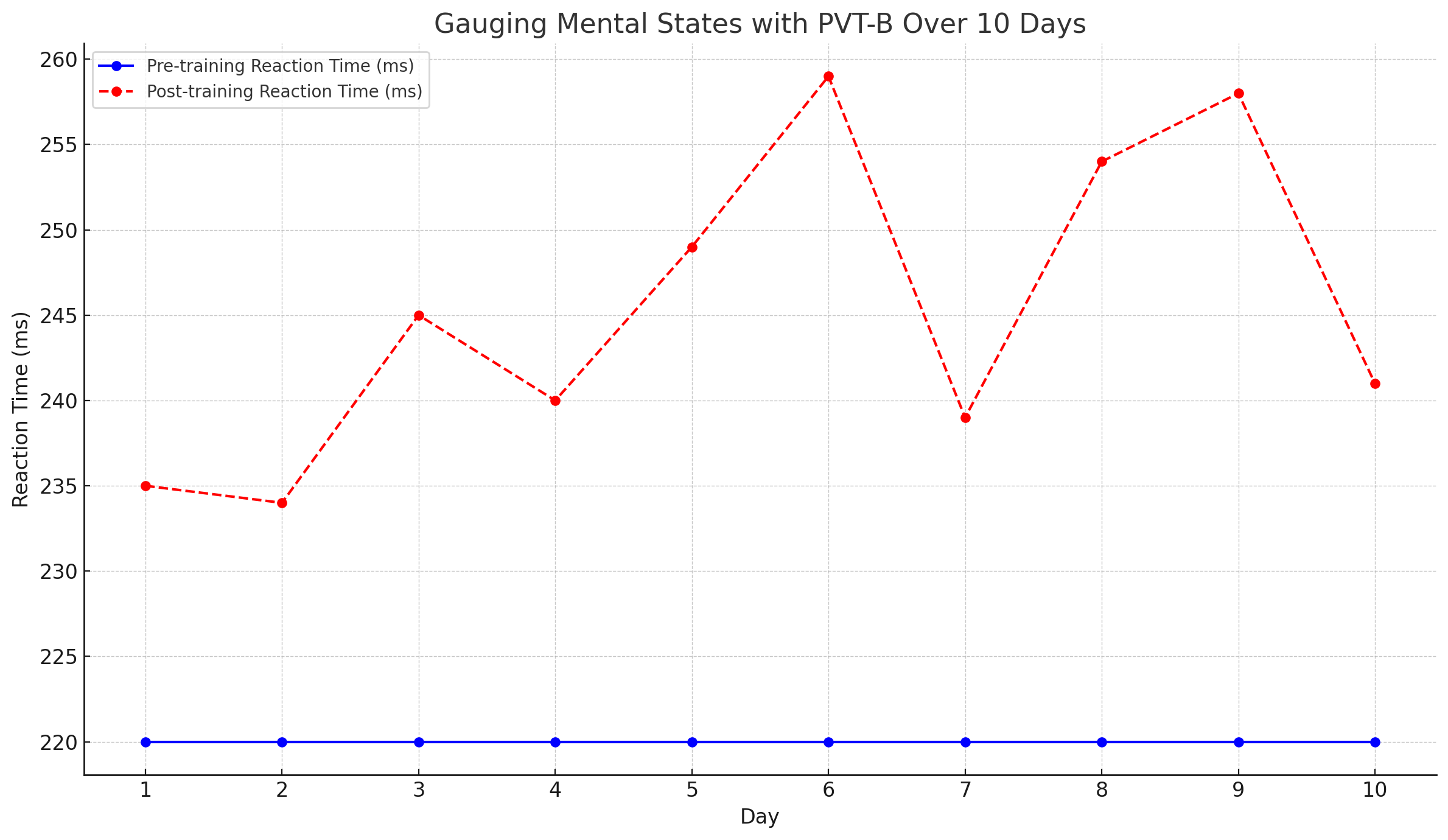
Striking the Right Balance:
Feedback from the PVT test is crucial for understanding the effects of cognitive load. A significant increase in lapses or a decline in reaction speed after training suggests that the load was sufficient to cause mental fatigue. This concept mirrors physical training: there needs to be adequate stress to drive improvements in speed, fitness, and strength.
The graph below displays the post-session reaction times over a span of 10 days. The red line traces the rise in lapses after each session.
From the data presented, it's evident that the individual is grappling with mental fatigue. Their inability to bounce back is clear as the lapse count and reaction times deteriorate. When such a trend emerges, it's essential to reevaluate the training regimen and make necessary adjustments. If this strain is intentional (as might be the case in an "overreaching" phase), it's crucial to decrease the cognitive load at the phase's conclusion to allow for recovery.
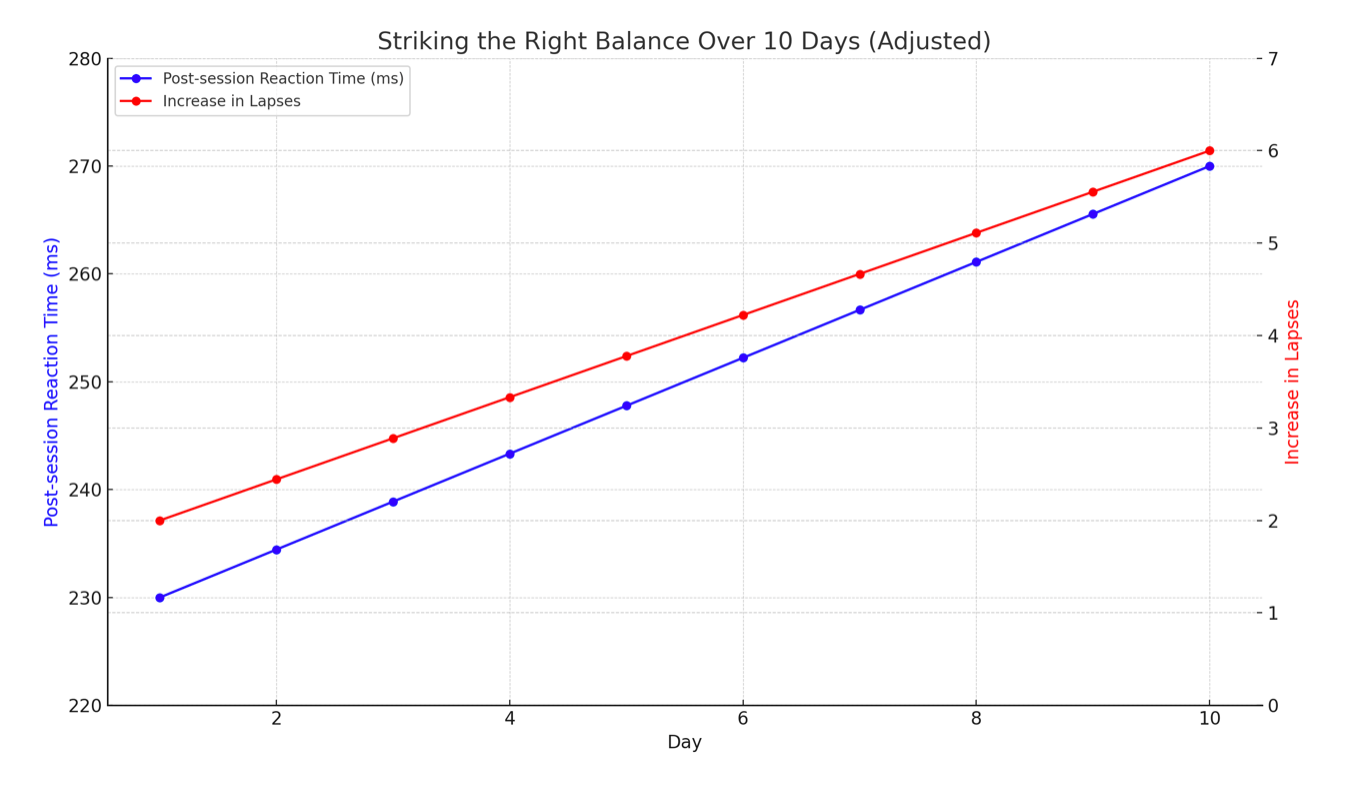
Sufficient Load:
In the 30-day graph below, the individual's consistent PVT-B pre-training reaction times can be seen. This consistency, depicted by the blue line, indicates the athlete's successful recovery from one session to the next. The red line, which shows slower reaction times post-training compared to pre-training, suggests that the training sessions were effectively challenging. This lag in post-training reaction times confirms that an adequate cognitive load was applied during each session.
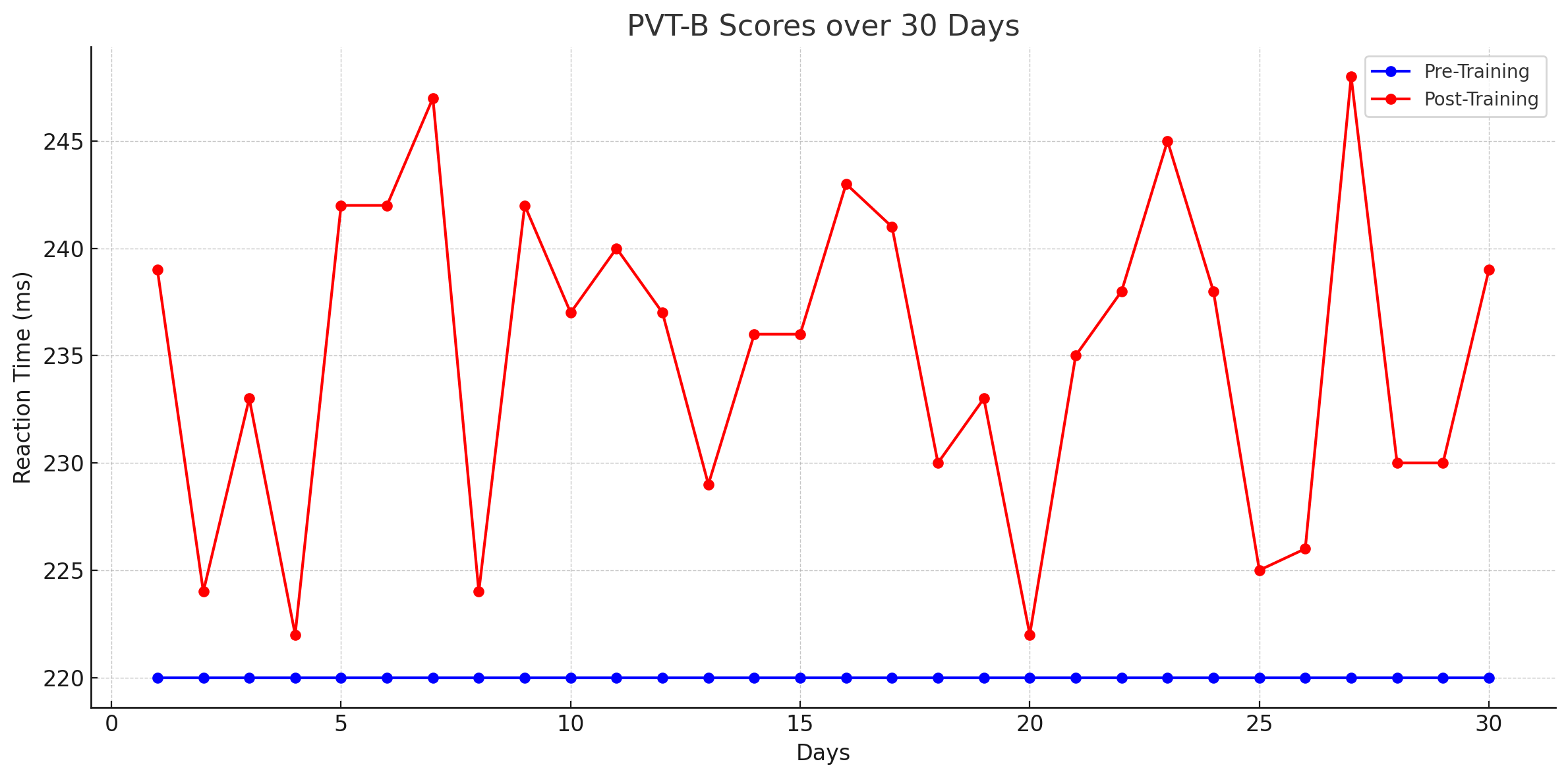
Signs of Mental Fatigue or Deliberate Overreaching:
In this graph spanning a 30-day period shows a consistent increase in both pre and post-training reaction times. As the PVT test results show a gradual slowdown over time, it suggests two possibilities:
- The individual is experiencing mental fatigue and struggling to recover.
- There is a deliberate strategy of overreaching in play.
If the latter is the case – where overreaching is intentional – it's crucial to have a well-planned recovery phase following this period. This will ensure that the individual recuperates and benefits from the intensive training phase.
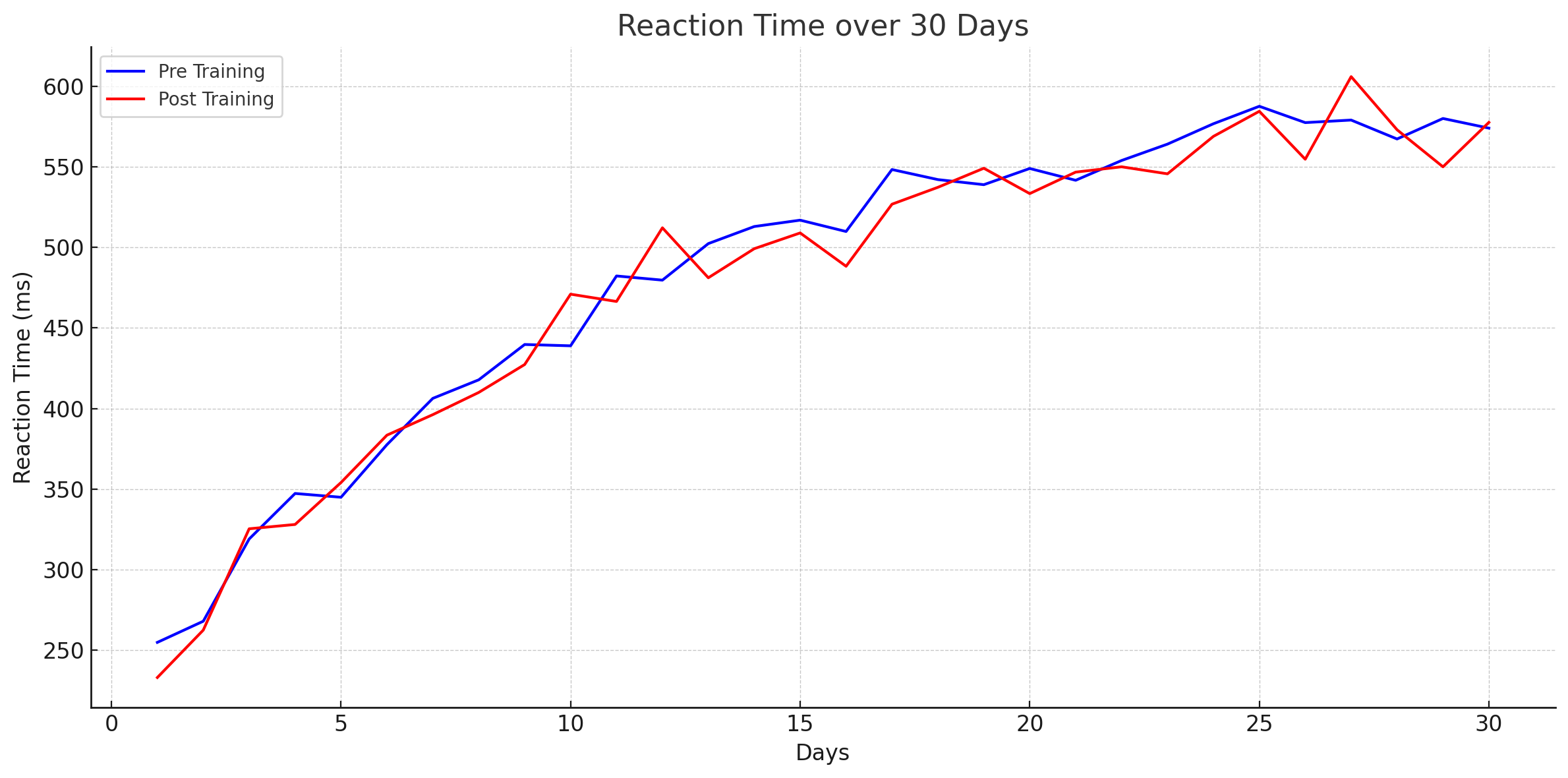
Inadequate Training Load:
When there's little to no difference between pre and post-training reaction times (20 milliseconds), it suggests that the cognitive training load might be too light and isn't inducing any significant mental fatigue. In such cases, adjustments might be needed to make the training more challenging.
However, just like physical workouts in the gym, the goal isn't always to push to the limit. If the aim is simply maintenance or to avoid excessive mental fatigue, then a minimal variation in reaction times is perfectly acceptable. The key is to align the training intensity with the desired outcome, whether that's growth through challenge or maintaining current cognitive abilities.
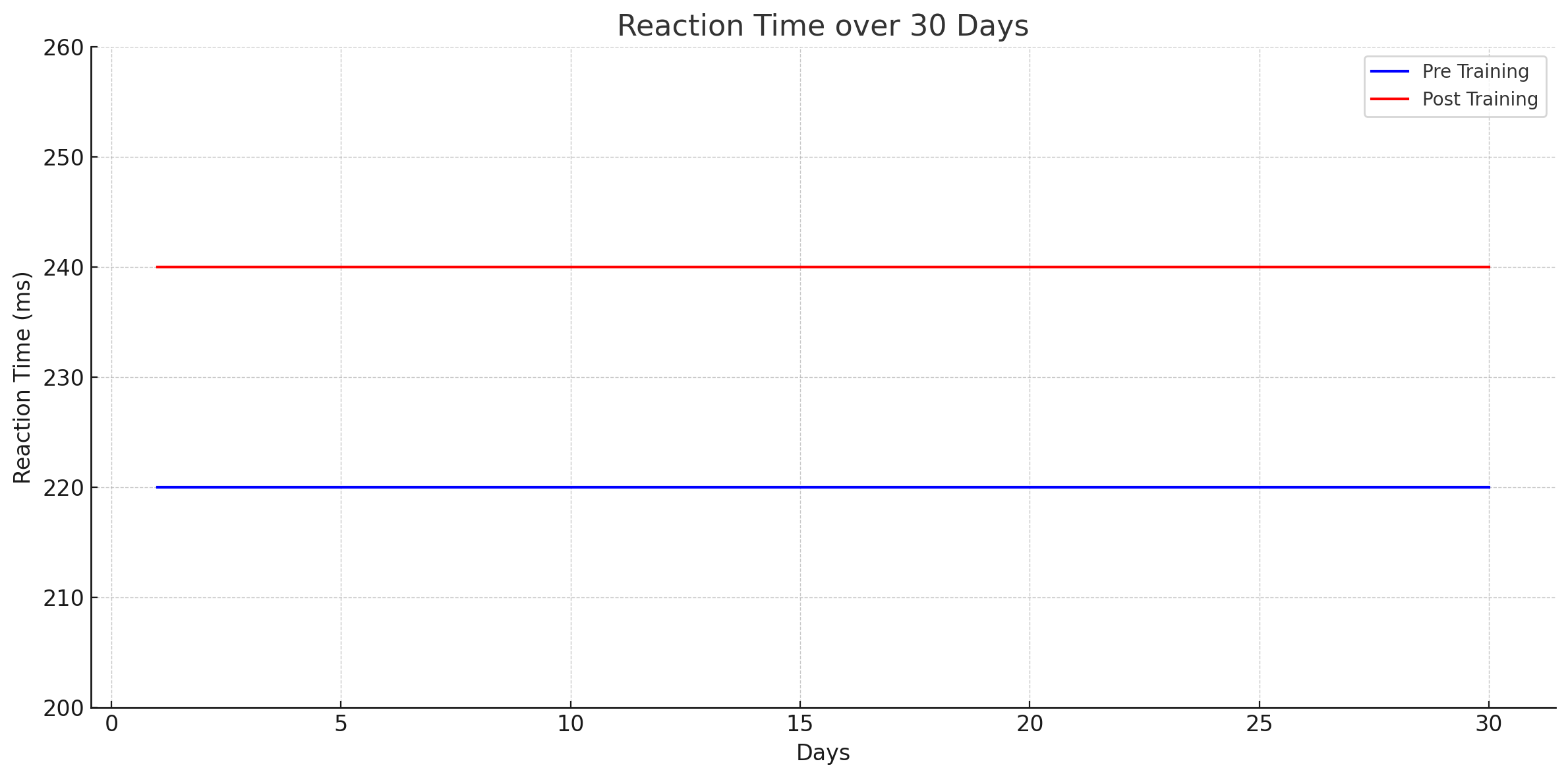
Conclusion:
The PVT or PVT-B stands as an invaluable tool in objectively gauging cognitive load and mental fatigue. To truly harness its potential, it's essential to monitor these metrics consistently, understanding each individual's baseline. If an individual consistently shows similar pre and post PVT results, it might indicate the need to amplify the session's cognitive load to ensure sufficient challenge. However, if their pre PVT remains consistent, but the post PVT reveals slower reactions and increased lapses, it suggests the training load is just right. On the other hand, a consistent rise in both pre and post reaction times and lapse counts throughout a training cycle may signal overtraining or overreaching—indicating a crucial need for planned recovery phases.
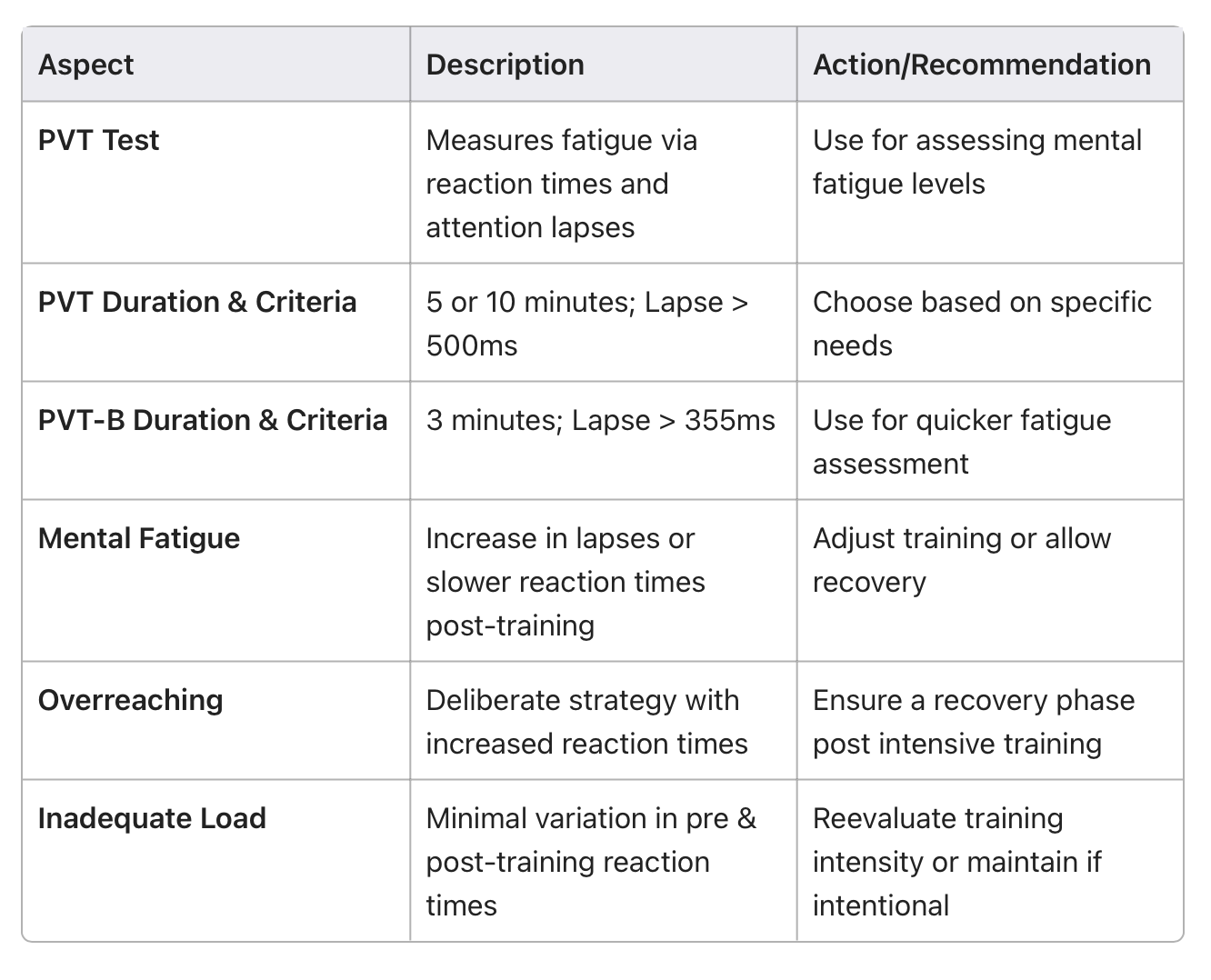
🌐 Connect With Us
🌍 Soma Technologies: Engineered to enhance human performance.
📸 Instagram: Dive into our world through exclusive photos and stories.
👥 Facebook: Join our community for the latest updates and discussions.
📈 LinkedIn: Connect with us professionally and stay informed about industry news.
🎥 YouTube: Watch our latest videos, tutorials.
🐦 X: Follow us for instant updates, news, and engaging tweets.
